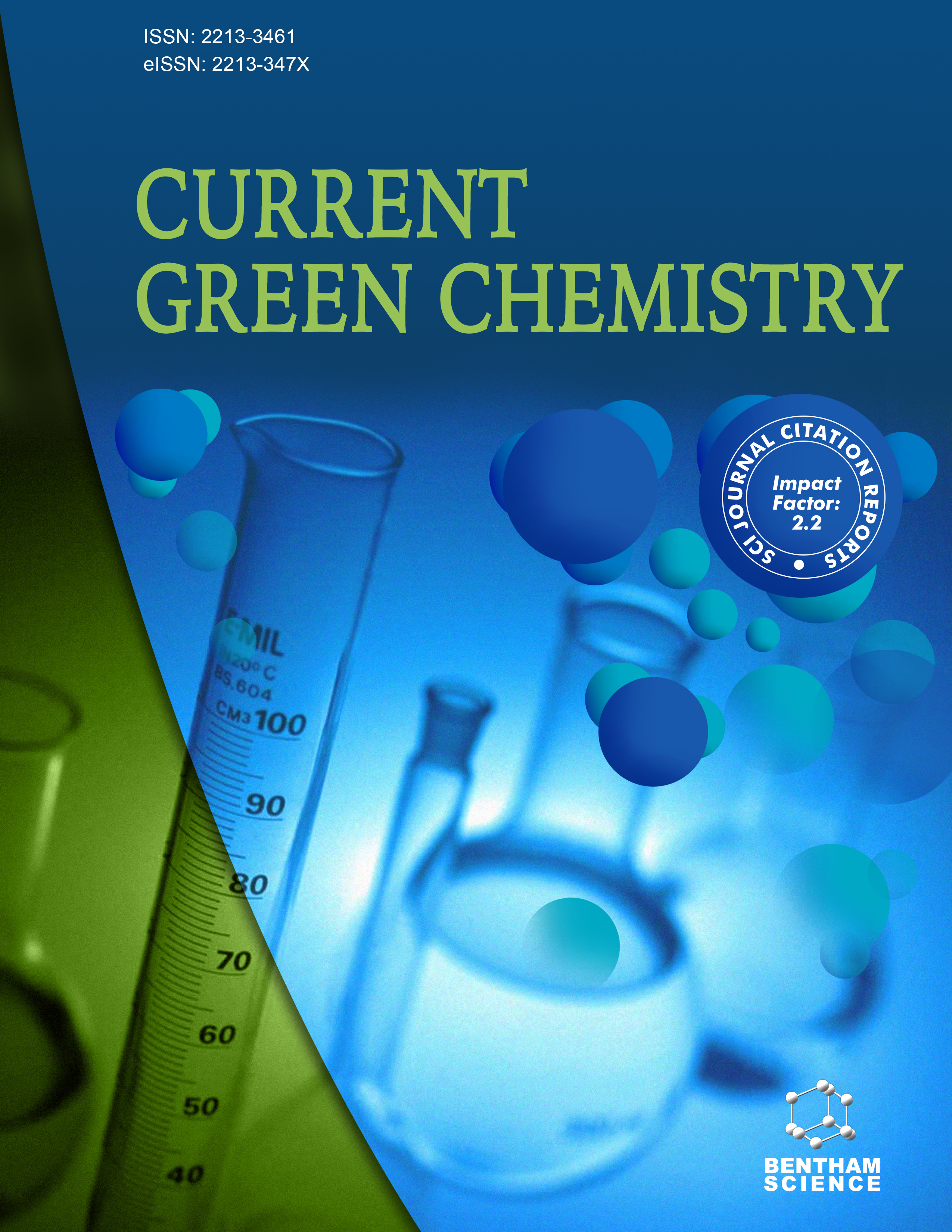- Home
- A-Z Publications
- Current Green Chemistry
- Previous Issues
- Volume 11, Issue 4, 2024
Current Green Chemistry - Volume 11, Issue 4, 2024
Volume 11, Issue 4, 2024
-
-
Plastic Waste Valorization: Prospects for Green Hydrogen Production
More LessBy Rafael LuquePlastic waste is a current issue worldwide that is already negatively influencing and threatening the lives of human beings, with residual micro- and nanoplastics entering water and soil bodies inducing recalcitrant pollution and health issues. The proposed perspective has been aimed to provide an overview of the potential of plastic waste valorization to green hydrogen and carbonaceous nanostructures. The overall concept addi Read More
-
-
-
Carbon-Chalcogenide Cross-Coupling Reactions in Water
More LessAuthors: Atanu Mahata, Totan Roy, Animesh Mondal and Debasish KunduOver the past two decades, researchers have witnessed the synthesis of diaryl sulfides and diaryl selenides via transition metals-mediated carbon-heteroatom cross-coupling reactions in the presence of various organic and inorganic solvents. The use of water as a clean and environmentally friendly solvent in cross-coupling chemistry of C-S/Se bond formations has attracted profound interest owing to its availability, non-toxici Read More
-
-
-
A Review on Environment-friendly Protocol for the Synthesis of Pyrazole Derivative
More LessAuthors: Nitesh Kumar, Sejal Rajput, Ridham Patel, Ashesha Yadav and Shanta Raj LakshmiPyrazole derivatives are a significant group of heterocyclic compounds that have a diverse variety of biological activities and are used in several fields, such as medicines, agrochemicals, and materials research. Conventional methods for synthesizing pyrazole derivatives typically require severe reaction conditions, hazardous reagents, and environmentally harmful solvents, presenting considerable obstacles to achieving s Read More
-
-
-
Lactic Acid Bacteria As Biological Control Agent For Controlling Aspergillus Growth and Aflatoxin Production: A Review
More LessAuthors: Rubi Ahuja and Minhaj Ahmad KhanAspergillus sp., a ubiquitous filamentous fungus, poses significant challenges to the food industry as a common spoilage and mycotoxin producing organism. The conventional use of chemical preservatives to control Aspergillus contamination raises concerns about potential health risks and environmental impacts. Therefore, alternative approaches, such as the utilization of natural biopreservatives, as inexpensive, safe, and Read More
-
-
-
Glycogen: A Novel Biopolymer Catalyst for the One-Pot Synthesis of Spirooxindoles, Spiro-Acenaphthylenes, and Spiro-2-Aminopyrans Derivatives under Mild Conditions
More LessAuthors: Nahid Ahmadi, Malek Taher Maghsoodlou, Mahmoud Nassiri and Forough Jalili MilaniBackgroundGlycogen, a naturally occurring macromolecule, in its granular form and without any post-modification was found to be an efficient and eco-friendly bifunctional heterogeneous organocatalyst.ObjectiveThis catalyst can be useful for the domino synthesis of various spiropyren annulated derivatives through three-component condensation of isathin, malononitrile, and diverse 1,3-dicarbonyl compounds, activate Read More
-
-
-
Selective Hydrogenation of Furfural into Cyclopentanone Over Composite Metal Catalysts under Mild Conditions
More LessAuthors: Wei Long, Yaoxu Lin, Yinfei Huang and Zhanhua SuBackground/IntroductionThe direct hydrogenate conversion of furfural to cyclopentanone is very interesting technology in biomass conversion and utilization. Many kinds of metal catalysts were used in this field, and composite metal catalysts exhibited superior catalytic performance. The hydrogenation process and rearrangement of the furan ring are competitive, polymerization of furfural can prevent the improvement of Read More
-
Most Read This Month
Article
content/journals/cgc
Journal
10
5
false
en


